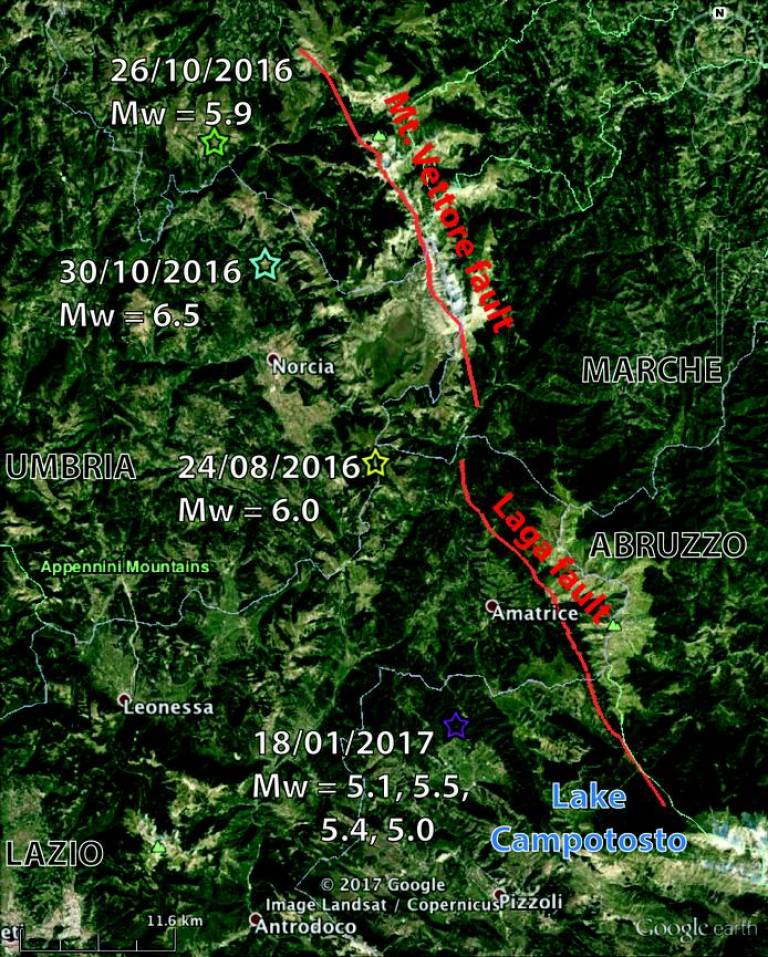New research published: Stress before, during and after the central Italian earthquakes in 2016
12 July 2017
The three damaging earthquakes that occurred in central Italy in August - October 2016 (Mw = 6.
 0 - 6.5) damaged numerous hilltop towns and villages and the combined death toll was ~300. A summary following the first earthquake is available here (link to https://www.ucl.ac.uk/rdr/irdr/general-news/amatrice-earthquake-24-aug-2016 news article).
0 - 6.5) damaged numerous hilltop towns and villages and the combined death toll was ~300. A summary following the first earthquake is available here (link to https://www.ucl.ac.uk/rdr/irdr/general-news/amatrice-earthquake-24-aug-2016 news article).
The stress present on the two faults that moved to generate these earthquakes has been investigated as part of a new publication from two members of the IRDR: Zoe Mildon and Dr. Joanna Faure Walker (with Prof. Gerald Roberts and Francesco Iezzi from Birkbeck). Before the first earthquake occurred on the 24th August, there were patches of high and low stress across the Mt. Vettore fault. There is a correlation between a region of low stress (caused by a bend in the fault) and the edge of the portion of the fault that moved. Therefore it is suggested that the area of the fault that moved and therefore the size of the earthquake was affected by the pre-stress on the fault.
This paper also investigates the history of the stress on the Mt. Vettore fault, from the time since the last earthquake, which occurred between 4000 and 1300 years before present. The stress increases slowly on the fault during the time between earthquakes. The stress can also increase or decrease more rapidly due to other earthquakes occurring around the Mt. Vettore fault. The history shows that other historical earthquakes have affected the stress build up on the Mt. Vettore fault.
After the three major destructive earthquakes that occurred in 2016, there were four small earthquakes (Mw 5.0 - 5.5) that occurred on the 18th January 2017 on the Laga fault (to the south of the Mt. Vettore fault). These caused some concern for the integrity of the dammed Campotosto Lake. The results from this paper show that these earthquakes occurred in an area of high stress, however the size of these earthquakes is relatively small and there may be regions of high stress (with the possibility of generating other earthquakes) still present on the Laga fault.
To read the full article, click here: https://academic.oup.com/gji/article/doi/10.1093/gji/ggx213/3858476/Coulomb-stress-transfer-and-fault-interaction-over
 Close
Close






